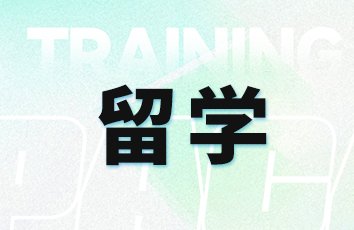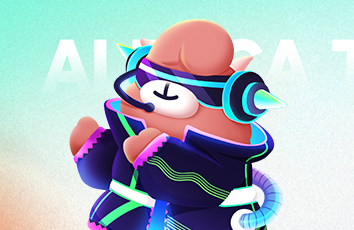剑雅17阅读真题Test2 Passage1原文
剑桥雅思17一共收集了雅思真题4套,下文羊驼小编整理了剑雅17第二套阅读真题原文Test 2 Reading Passage,以下是阅读部分第一篇文章Passage 1的文章原文及参考译文,供各位烤鸭们复习参考。想要了解更多关于剑雅17听力和阅读真题答案及解析的考生可查看剑桥雅思17听力阅读真题答案及解析汇总,为助力各位烤鸭们备考雅思,羊驼教育雅思APP推出剑桥雅思真题及答案解析视频,可在羊驼雅思APP课程一栏获取剑桥雅思系列的视频信息。

剑雅17 Test 2 Passage1阅读1-13题解析请查看剑雅17 Test2阅读第1-5填空题答案解析和剑雅17 Test2阅读第6-13判断题答案解析
READING PASSAGE 1
You should spend about 20 minutes on Questions 1–13, which are based on Reading Passage 1 below.
The Dead Sea Scrolls
In late 1946 or early 1947, three Bedouin teenagers were tending their goats and sheep near the ancient settlement of Qumran, located on the northwest shore of the Dead Sea in what is now known as the West Bank. One of these young shepherds tossed a rock into an opening on the side of a cliff and was surprised to hear a shattering sound. He and his companions later entered the cave and stumbled across a collection of large clay jars, seven of which contained scrolls with writing on them. The teenagers took the seven scrolls to a nearby town where they were sold for a small sum to a local antiquities dealer. Word of the find spread, and Bedouins and archaeologists eventually unearthed tens of thousands of additional scroll fragments from 10 nearby caves;
together they make up between 800 and 900 manuscripts. It soon became clear that this was one of the greatest archaeological discoveries ever made.
The origin of the Dead Sea Scrolls, which were written around 2,000 years ago between 150 BCE and 70 CE, is still the subject of scholarly debate even today. According to the prevailing theory, they are the work of a population that inhabited the area until Roman troops destroyed the settlement around 70 CE. The area was known as Judea at that time, and the people are thought to have belonged to a group called the Essenes, a devout Jewish sect.
The majority of the texts on the Dead Sea Scrolls are in Hebrew, with some fragments written in an ancient version of its alphabet thought to have fallen out of use in the fifth century BCE. But there are otherlanguages as well. Some scrolls are in Aramaic, the
language spoken by many inhabitants of the region from the sixth century BCE to the
siege of Jerusalem in 70 CE. In addition, several texts feature translations of the Hebrew Bible into Greek.
The Dead Sea Scrolls include fragments from every book of the Old Testament of the Bible except for the Book of Esther. The only entire book of the Hebrew Bible preserved among the manuscripts from Qumran is Isaiah; this copy, dated to the first century BCE, is considered the earliest biblical manuscript still in existence. Along with biblical texts, the scrolls include documents about sectarian regulations and religious writings that do not appear in the Old Testament.
The writing on the Dead Sea Scrolls is mostly in black or occasionally red ink, and the scrolls themselves are nearly all made of either parchment (animal skin) or an early form of paper called ‘papyrus’ . The only exception is the scroll numbered 3Q15,which was created out of a combination of copper and tin. Known as the Copper Scroll, this curious document features letters chiselled onto metal – perhaps, as some have theorized,to better withstand the passage of time. One of the most intriguing manuscripts from Qumran, this is a sort of ancient treasure map that lists dozens of gold and silver caches. Using an unconventional vocabulary and odd spelling, it describes 64 underground hiding places that supposedly contain riches buried for safekeeping. None
of these hoards have been recovered, possibly because the Romans pillaged Judea during the first century CE. According to various hypotheses, the treasure belonged to local people, or was rescued from the Second Temple before its destruction or never existed to begin with.
Some of the Dead Sea Scrolls have been on interesting journeys. In 1948, a Syrian Orthodox archbishop known as Mar Samuel acquired four of the original seven scrolls from a Jerusalem shoemaker and part-time antiquity dealer, paying less than $100 for them. He then travelled to the United States and unsuccessfully offered them to a number of universities, including Yale. Finally, in 1954, he placed an advertisement in the business newspaper The Wall Street Journal – under the category ‘Miscellaneous Items for Sale’ – that read: ‘Biblical Manuscripts dating back to at least 200 B.C. are for sale. This would be an ideal gift to an educational or religious institution by an individual or group.’ Fortunately, Israeli archaeologist and statesman Yigael Yadin negotiated their purchase and brought the scrolls back to Jerusalem, where they remain to this day.
In 2017, researchers from the University of Haifa restored and deciphered one of the last untranslated scrolls. The university’s Eshbal Ratson and Jonathan Ben-Dov spent one year reassembling the 60 fragments that make up the scroll. Deciphered from a band of coded text on parchment, the find provides insight into the community of people who wrote it and the 364-day calendar they would have used. The scroll names celebrations that indicate shifts in seasons and details two yearly religious events known from
another Dead Sea Scroll. Only one more known scroll remains untranslated.
参考译文
死海古卷
1946年底或1947年初,三个贝都因少年在谷木兰定居地附近放牧,该定居 点位于死海西北岸,现被称为约旦河西岸。其中一个年轻的牧羊人将一块石头扔 进了悬崖边上的一个洞口,惊讶地听到了破碎的声音。后来,他和他的同伴们进 入山洞,偶然发现了一系列的大瓦罐,其中七个装有写着字的卷轴。少年们把这 七个卷轴带到了附近的一个小镇,在那里他们以一笔小钱卖给了当地的一个古董 商。他们发现这些卷轴的消息传开了,贝都因人和考古学家最终从附近的10个 洞穴中又发掘出了数以万计的卷轴碎片;它们合在一起构成了800至900份手稿。 人们很快发现,这是有史以来最伟大的考古发现之一。
死海古卷写于大约2000年前,即公元前150年至公元70年之间,其起源即 使在今天仍然是学术界争论的主题。根据流行的理论,它们是居住在该地区的居 民的作品,直到罗马军队在公元70年左右摧毁了该定居点。当时该地区被称为 朱迪亚,这些人被认为属于一个叫做Essenes 的团体,这是一个虔诚的犹太教派。
死海古卷上的大部分文字都是希伯来语,其中一些片段是用一种古老的字母 书写的,这种字母被认为在公元前五世纪就已经不再使用了。但也有其他语言。 一些卷轴使用的是阿拉姆语,公元前6世纪至公元70年耶路撒冷被围困期间,
当地许多居民都使用这种语言。此外,还有一些文本将希伯来语圣经翻译成希腊语 。
死海古卷包括《圣经》旧约中除《以斯帖记》之外的每一本书的片段。在谷 木兰的手稿中,唯一保存下来的希伯来圣经全书是以赛亚书;这本可追溯到公元 前一世纪的副本被认为是现存最早的圣经手稿。除了圣经文本外,卷轴还包括关 于教派法规的文件和《旧约》中没有出现的宗教著作。
死海古卷上的文字大多用黑色墨水,偶尔也用红色墨水,而这些古卷本身几 乎都是由羊皮纸(动物皮)或一种称为"纸莎草"的早期纸张制成。唯一的例外 是编号为3Q15 的卷轴,它是由铜和锡的混合物制成的。这份被称为铜卷轴的奇 怪文件的特点是刻在金属上的字母 也许,正如一些人推测的那样,是为了更 好地经受住时间的流逝。这是谷木兰最有趣的手稿之一,它是一种古代藏宝图, 列出了几十个金银藏匿处。它使用了非常规的词汇和奇怪的拼写,描述了64个 地下藏宝地,据说这些藏宝地都是为了妥善保管而埋藏的财富。这些储藏物都还 没有被找到,可能是因为罗马人在公元一世纪期间掠夺了朱迪亚。根据各种假设, 这些宝藏属于当地人,或者是在第二圣殿被毁之前从那里被挖出来,或者根本不 存在。
一些死海古卷经历了有趣的旅程。1948年,叙利亚东正教大主教Mar Samuel 以不到100美元的价格,从耶路撒冷的一个鞋匠兼职古董商那里买下了七幅古卷 中的四卷。然后他去了美国,向包括耶鲁大学在内的多所大学提供这些卷轴,但 未成功。最后,1954年,他在商业报纸《华尔街日报》上刊登了一则广告--在" 待售杂项"类别下--内容是:"出售至少可追溯到公元前200年的《圣经》手稿。 这将是个人或团体送给教育或宗教机构的一份理想礼物'。幸运的是,以色列考 古学家和政治家Yigael Yadin 通过谈判买下了这些手稿,并将其带回了耶路撒冷, 并一直保存到今天。
2017年,海法大学的研究人员修复并破译了最后一批未翻译的卷轴之一。
该大学的Eshbal Ratson和 Jonathan Ben-Dov花了一年时间重新组装了构成该卷 轴的60个碎片。通过对羊皮纸上的编码文本进行破译,让人们得以深入了解写 这段文字的群体以及他们可能使用的364天日历。该卷轴列出了表明季节变化的 庆祝活动,并详细说明了另一个死海卷轴中已知的两个年度宗教活动。只有一幅 已知的卷轴尚未翻译。





